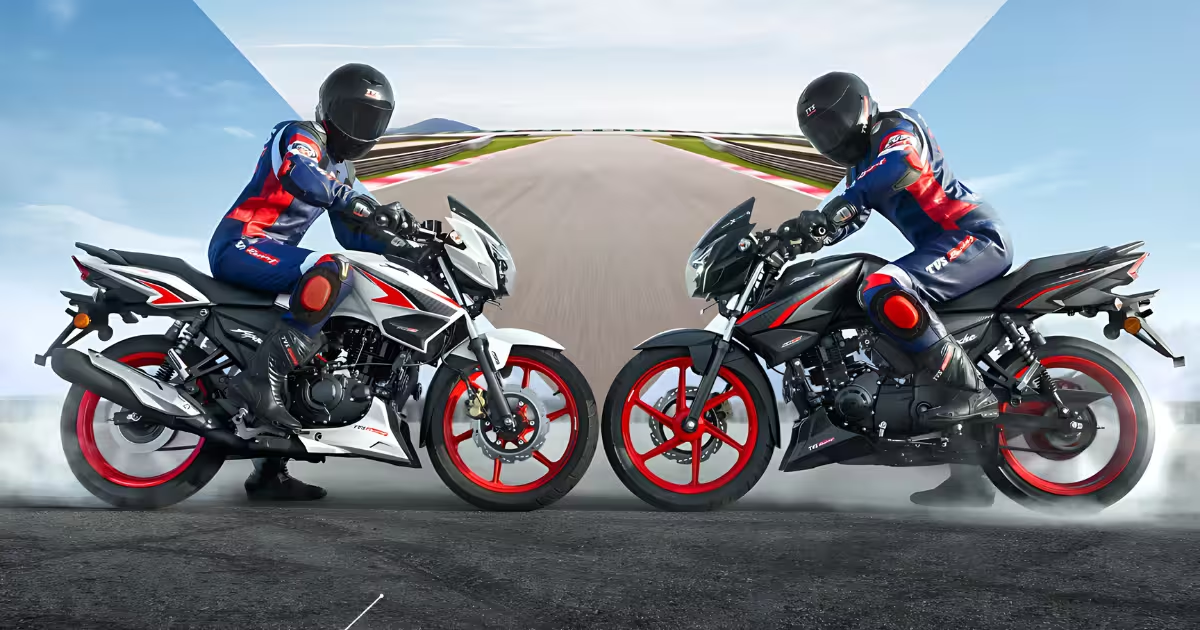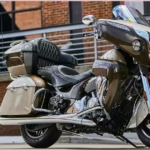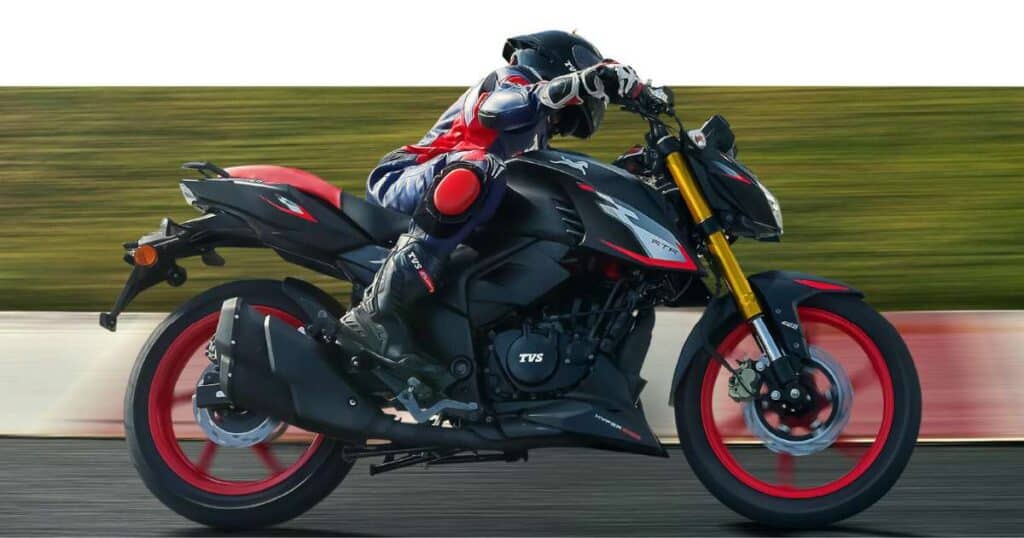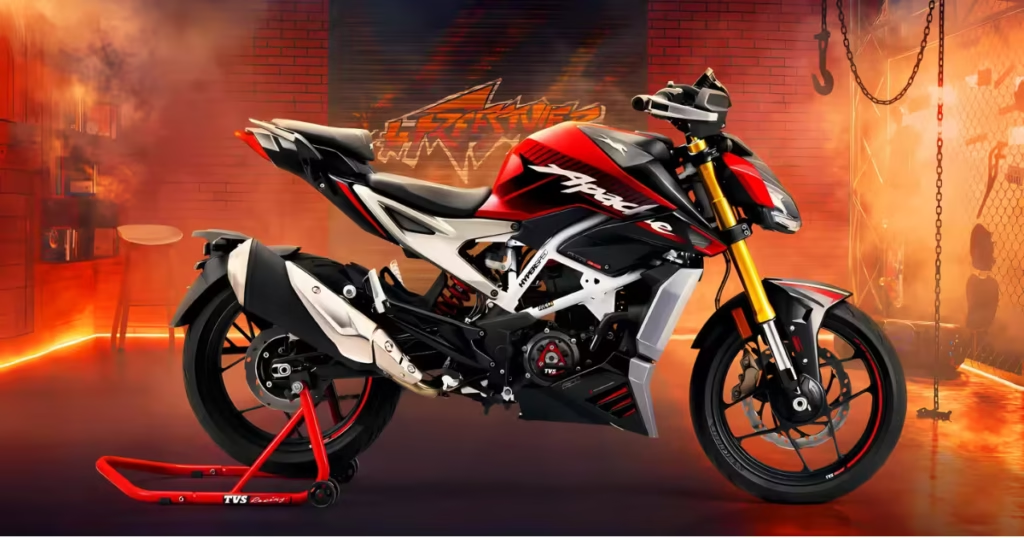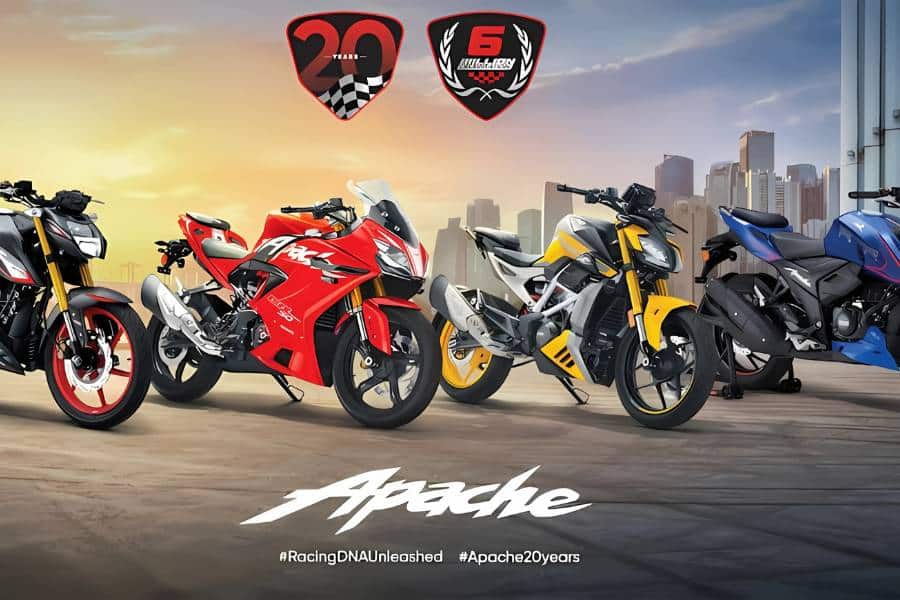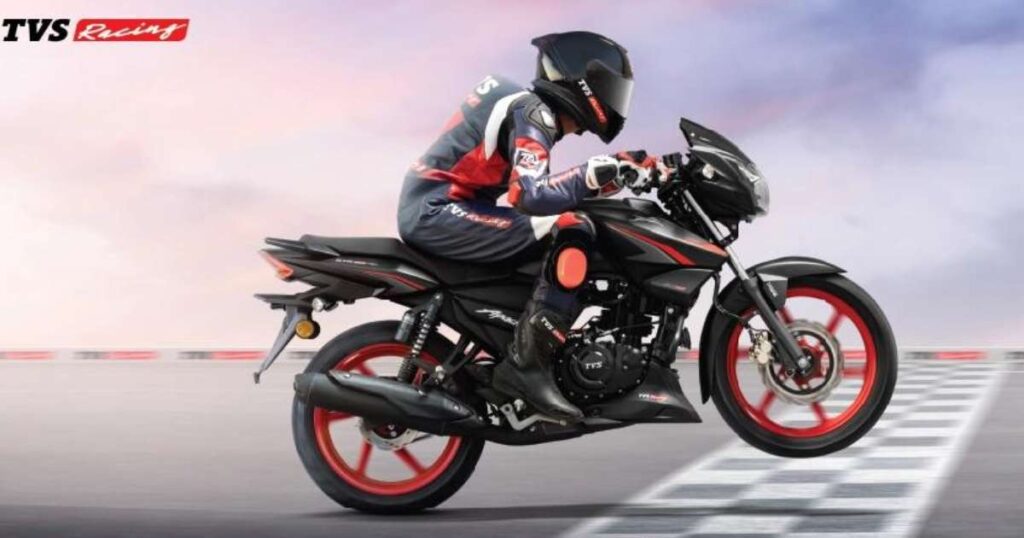2025 TVS Apache RTR 160 Launched with dual-channel ABS, updated graphics, and SmartXonnect features.
TVS Motor Company has introduced the 2025 version of its popular street bike, the Apache RTR 160. This new model features advanced technology and better safety features. It is priced at Rs 1.34 lakh (ex-showroom, Delhi). This update is an important step for the brand’s top-selling bike in the 160cc
Also Read: 2025 TVS Apache RTR 200 4V Launched at Rs 1.54 Lakh
Design and Features
The 2025 TVS Apache RTR 160 keeps its bold street-bike look but introduces new graphics and fresh color options. It now features Matte Black and Pearl White with eye-catching red alloy wheels. Its sharp design, combined with racing-style decals, still highlights the bike’s racing roots.

A key highlight is the introduction of dual-channel ABS, a first for the RTR 160 series. This upgrade greatly boosts braking, especially on wet or slippery roads. Riders get better control and more safety during sudden stops or tricky surfaces.
Also Read: 2025 TVS Apache RR 310 Launched – Starting at Rs 2.78 Lakh
The Apache RTR 160 stays ahead in its class by offering top features. It has three riding modes—Sport, Urban, and Rain—that let you adjust power and ABS sensitivity. The bike also includes TVS SmartXonnect, which pairs via Bluetooth for navigation, alerts for calls and messages, and vehicle checks. Plus, it has a Voice Assist feature for hands-free control of important functions, making riding more convenient.
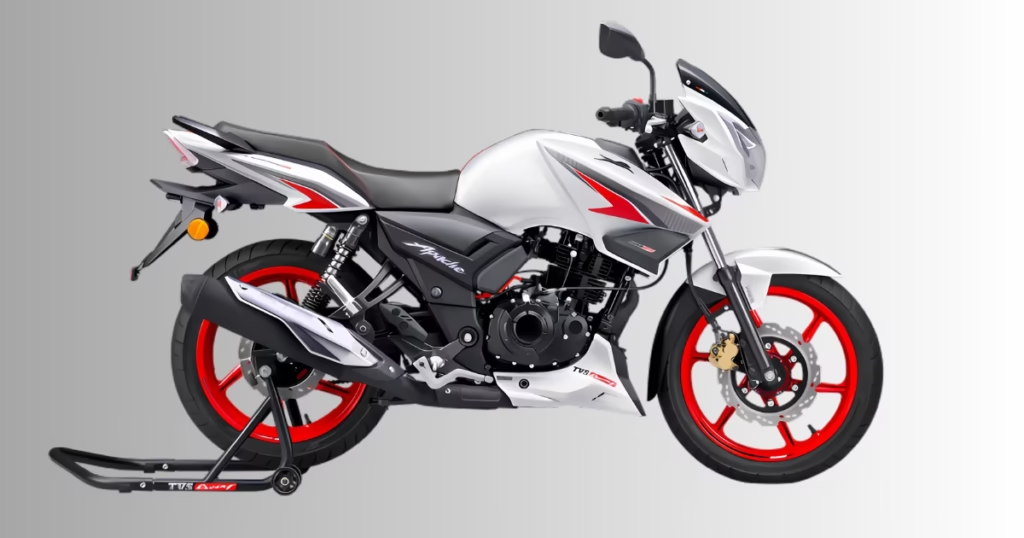
Also Read: TVS Apache RTR 160 4V with USD Forks Launched at Rs 1.40 Lakh
2025 TVS Apache RTR 160 Engine
The bike’s engine is reliable with its 159.7cc single-cylinder, air-cooled design. It produces 15.81 horsepower at 8,750 rpm and 13.85 Nm of torque at 7,000 rpm. Its lightweight frame and top-tier power-to-weight ratio give the RTR 160 quick acceleration and sharp handling. This makes it great for city roads as well as longer rides on the highway.
The engine is now OBD2B-compliant, ensuring adherence to the latest emission and diagnostic norms in India. This not only reduces environmental impact but also preps the bike for future regulatory demands.
